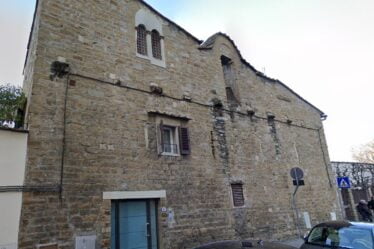

Introduction
This story, titled “The Barber’s Hidden Origins,” reveals a surprising connection between Porta Pia and… barbers. It is a remarkable blend of history, architecture, and irony, showing how Michelangelo left behind one of his most unexpected messages. Below you will find the translated article enriched with subtitles, transition words, and improved readability—perfect for SEO.
The Barber’s Hidden Origins
Porta Pia and an Unexpected Connection
What do Porta Pia and barbers have in common? Porta Pia is one of the monumental gates of the Aurelian Walls in Rome. However, few people know that it is also one of Michelangelo’s final works, and—interestingly—hides a curious secret.
To discover it, we must walk to the opposite side, toward Via XX Settembre.
The Barber’s Hidden Origins
Michelangelo’s Last Commission
The commission for Porta Pia was given to Michelangelo by Pope Pius IV, and even more impressively, Michelangelo was already more than 85 years old in 1561. Despite his age, he decorated the gate with three peculiar bas-reliefs, each consisting of a circular shape topped with what seems to be a draped ribbon or scarf.
Yet, Confusion at the Time
Although Pius IV appreciated the result overall, neither he nor anyone else could explain the meaning of these strange decorations. For decades, they remained a mystery.
The Barber’s Hidden Origins
The Revelation: A Century Later
Then, about a century later, something changed. At the Vatican, experts finally offered an interpretation, and—surprisingly—it was extremely down-to-earth. They stated, and I quote the Papal States directly:
“They are three barber’s shaving bowls, the one at the top also containing a piece of soap, surrounded by a barber’s towel decorated with fringe.”
Therefore, What Was Michelangelo Saying?
These three symbols were placed there to remind everyone of a simple but embarrassing truth:
Pope Pius IV, who proudly boasted about his noble Medici heritage, was only half noble. On his mother’s side, he descended from a family of barbers, a much humbler origin.
So Michelangelo hinted with these carvings:
“Easy there, Pius… beneath it all, there’s not that much nobility.”
The Final Irony
Finally, and quite ironically, history delivered its own punchline. Porta Pia itself would later “cut” through the Papal States—literally—when, in 1870, it became the site of the breach that ended papal rule and united Rome with the Kingdom of Italy.
With this, I conclude the story—perfectly capturing how art, symbolism, and irony intersect at Porta Pia.



